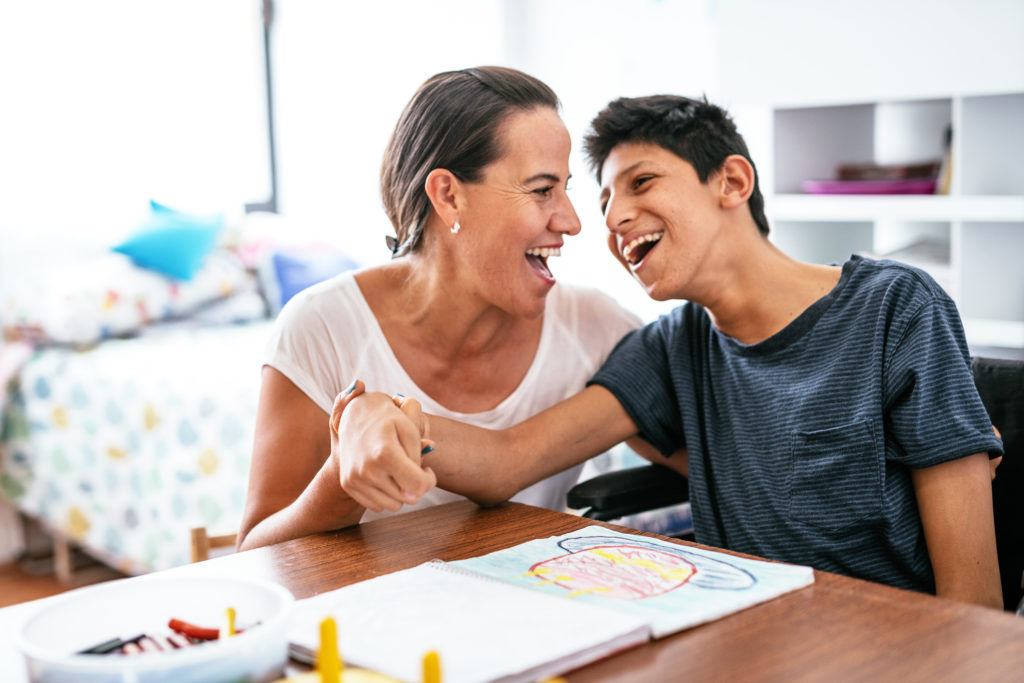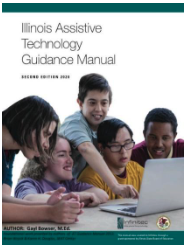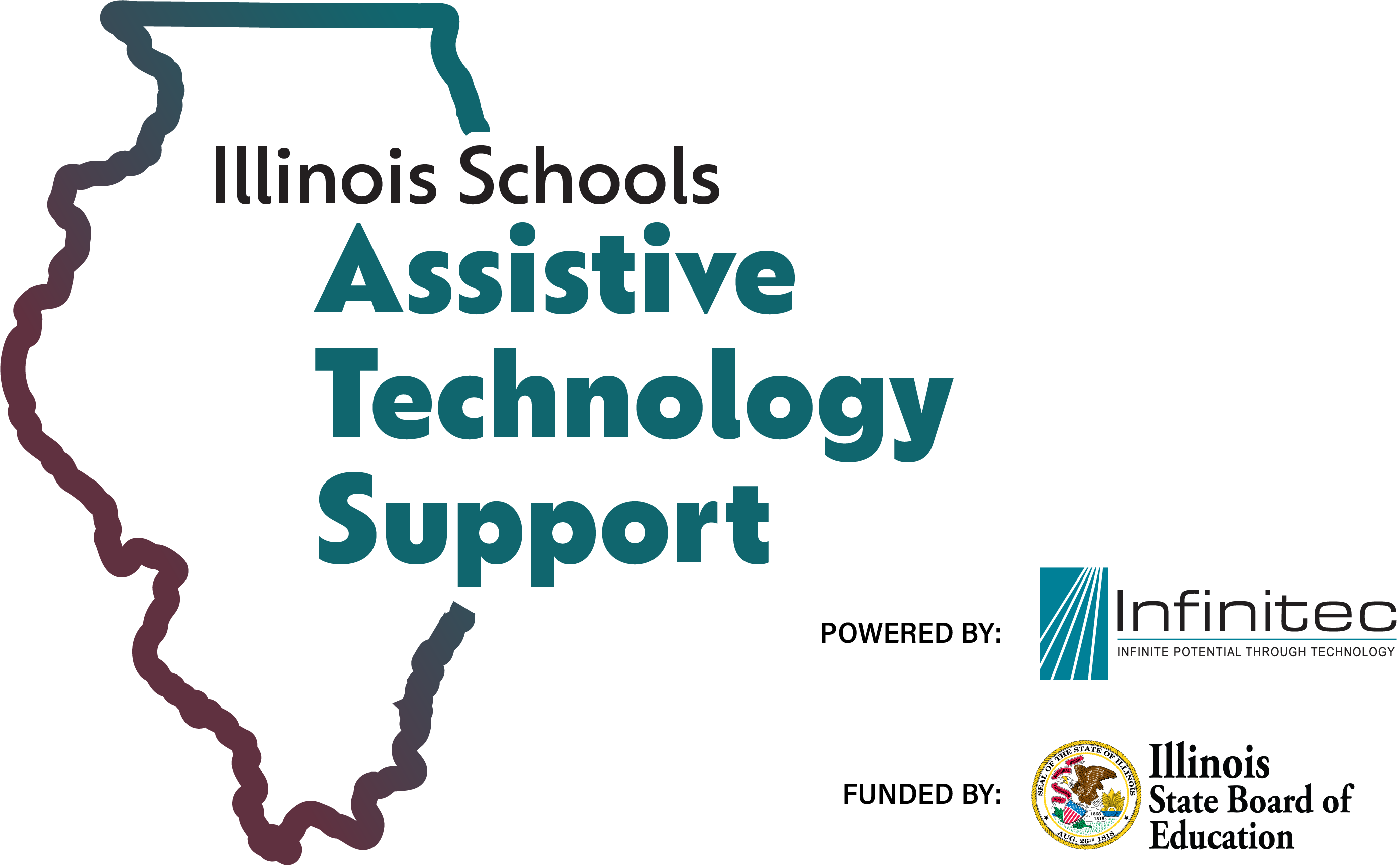
Welcome Parents/Guardians, If you have found your way to this page, you want to learn more about special education and assistive technology, you are looking for answers to some of your questions about AT, or, maybe things have been a bit confusing.
This web resource was created with parents in mind. To make it we interviewed parents to find out what they thought they needed to help them learn more about assistive technology. Parents we interviewed have students at many ages and stages of intervention in school systems across Illinois. In their interviews, they had common questions and common frustrations. Their thoughts were used to guide us as we created this space for you. We want to welcome you, and we believe you are one of the most important members of your child’s IEP team. You may be a special education wizard, learning about special education services along the way, or feeling a little lost. That is all okay. We hope that this site will begin to give you some answers and resources for even more information.
Three main topics were suggested by our parent interview team:
- Understanding the IEP and 504 process
- Understanding Assistive Technology
- Graduation and Beyond
These topics are broken down using easy-to-understand language while also introducing some of the “jargon”/profession-specific words that are used in special education programs. In each section, there are also some examples based on real stories from parents.
Some of the resources that will be used to explain AT are very extensive and have many pages; we have provided active links to those resources. We want to give you what you need in a way that is easy to access and will allow you to dive deeper into the areas most important to you. As you review pages designed especially for you, you are already on the path to being an awesome advocate for your child.
What is Assistive Technology?
For our purposes let’s start with some basic information on assistive technology also known as AT. At its base, assistive technology is “an accommodation using stuff.” Tools are given to a student to help them access the school environment or complete their work as independently as possible.
The legal definition of assistive technology:
“Assistive technology device means any item, piece of equipment, or product system, whether acquired commercially off the shelf, modified, or customized, that is used to increase, maintain, or improve the functional capabilities of a child with a disability. The term does not include a medical device that is surgically implanted, or the replacement of such device.” Sec. 300.5 Assistive technology device – Individuals with Disabilities Education Act. (2022). Sites.Ed.Gov. https://sites.ed.gov/idea/regs/b/a/300.5
An accommodation is an adjustment to a task where the person is still doing the same task as other students but in a different way. The “how” of the lesson is changed for the student. A good video module explaining accommodations in depth is HERE.
Accommodations can be a change in the amount of time for doing a task, the place where a task is done, how responses are accepted, and how information is presented.
A modification changes “what” a student is expected to learn or demonstrate. It is more student-specific instruction, by changing the level of the content or concepts being taught. You can learn more about modifications HERE.
Examples of modifications are reducing the amount of work that a student completes, offering an alternate assignment, materials at a different reading or instructional level, or support a student receives to complete tasks.
An example of an accommodation:
Some students have difficulty going at the same speed as everyone else in the class. This can be due to a lot of things – ADHD, anxiety, being a slower reader, and more. These students might not finish assignments or tests in the amount of time their teacher gives the class. They may rush to finish without really giving their full attention to each question. An accommodation for this situation would be that the student would get extended time.
An example of a good starting place for extended time is time and a half, compared to the rest of the class. If data shows that this is not enough, then more can be provided.
An example of a modification:
Work that a student is doing that is different from the other students in the class is considered a modification of instruction. A modification of the work is more tailored to a student’s specific learning level vs. grade level expectations. Modifications can allow a student to be in a general education classroom to learn the same ideas as their class while working at their personal learning level. Modifications are only available to students with IEPs, not those with a 504 plan. In college students can receive accommodations but typically they cannot receive modifications. Modifications are not available on standardized tests because they change the standardization of test items.
An example of a modification for a student may be using a word bank when the rest of the class does not, a reduced number of multiple choice options, or reading passages at a simplified level.
What laws do schools have to follow regarding assistive technology?
There are many laws that apply to assistive technology. Here are the FOUR most important ones in Illinois.
The first three are part of IDEA (Individuals with Disabilities Education Act)
- 300.105 – Assistive Technology must be available to all public school students
- 300.5 – What is an Assistive Technology device?
- 300.6 – What is an Assistive Technology service?
- The fourth is specific to Illinois. It requires that teams consider assistive technology with every IEP. The Illinois AT (Assistive Technology) Manual clarifies and summarizes many details about ways teams can work with assistive technology.
Illinois School Code – 2018 Update gives the full text of the laws that apply to Assistive Technology
(page 9) “At a child’s initial IEP meeting, and at each subsequent annual review meeting, the IEP team shall provide the child’s parent/guardian with a written notification that informs them that the IEP team is required to consider whether the child requires assistive technology in order to receive FAPE (free appropriate public education).
The amended Illinois School Code also requires that the notification from the LEA must include a toll-free telephone number and internet address for the State’s assistive technology program. In response to these changes, the Illinois State Board of Education revised the Parent/Guardian Notification of Conference form (34-57D) and the Educational Accommodations and Supports form (34-54N).”
LEA = Local Education Agency This means your school district. A person from the school will attend the meeting as the LEA representative.

The Illinois Assistive Technology manual continues: If an IEP team has at least one person who is knowledgeable about potential AT and AT services that may benefit students, then the team can proceed with the AT consideration process. If not, then the team should seek more information or add a team member who has that knowledge (page 19).”
The Illinois Assistive Technology manual also states that “if the team feels they do not have the expertise or all of the information to consider assistive technology for the student, they should adjourn and then reconvene the meeting (page 26).”
Sometimes questions come up at IEP meetings that can not be answered during the meeting because members of the team may feel they need more information from someone who is not present. This could be a specialist or someone with important information about the curriculum or the student. If this happens, you have the right to ask that they extend or reschedule the IEP meeting so that the team will have the needed information to finish the IEP. You may also continue with the IEP and request a meeting afterward to discuss this part individually. The team may make an amendment after this meeting if needed. This is up to YOU and your student!
